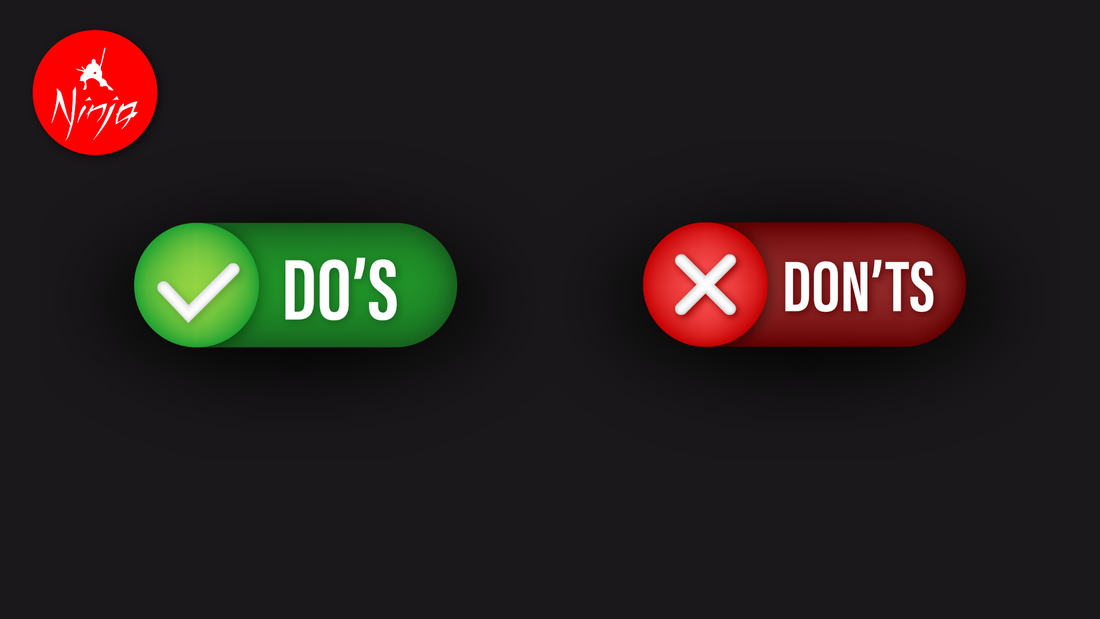
The Dos and Don'ts of Hairstyling Scissors
Share
Mastering the art of hairstyling scissors involves understanding the dos and don'ts to ensure optimal performance and longevity. Here's a comprehensive guide:
Dos:
-
Invest in Quality Scissors:
-
Choose high-quality scissors made from premium materials such as stainless steel or titanium. Quality scissors are more durable, maintain their sharpness longer, and provide better control during cutting.
-
-
Clean Scissors Regularly:
-
After each use, clean your scissors with a soft cloth to remove hair, debris, and product buildup. Use a mild detergent or specialized scissor cleaner if necessary. Dry them thoroughly before storing to prevent rust and corrosion.
-
-
Oil the Pivot Point:
-
Apply a drop of lubricating oil to the pivot point of your scissors regularly to keep them moving smoothly. This reduces friction between the blades and prevents premature wear.
-
-
Use Scissors for Hair Only:
-
Reserve your scissors solely for cutting hair and avoid using them for cutting other materials such as paper, fabric, or wire. Using scissors for unintended purposes can damage the blades and compromise their sharpness.
-
-
Sharpen Scissors When Needed:
-
Monitor the sharpness of your scissors and sharpen them as needed to maintain optimal cutting performance. Invest in professional sharpening services or learn how to sharpen them yourself using proper techniques and tools.
-
-
Store Scissors Properly:
-
Store your scissors in a protective case or holster when not in use to prevent damage to the blades. Avoid tossing them into drawers or leaving them exposed to other tools that could dull the edges.
-
-
Use Scissors with Precision:
-
Practice proper cutting techniques and use your scissors with precision to achieve clean and accurate cuts. Cut small sections of hair at a time, and avoid applying excessive force, which can strain the blades.
-
-
Maintain Proper Tension:
-
Adjust the tension of your scissors according to your cutting preference and the texture of the hair you're working with. Proper tension ensures smooth movement and consistent cutting performance.
-
-
Learn New Techniques:
-
Continuously expand your skills and knowledge by learning new cutting techniques and hairstyling trends. Experiment with different cutting angles, texturizing methods, and styling techniques to enhance your versatility as a hairstylist.
-
-
Replace Worn-Out Scissors:
-
Recognize when your scissors have reached the end of their lifespan due to extensive wear or damage. Replace them with new scissors to maintain the quality of your work and ensure the safety of your clients.
-
Don'ts:
-
Don't Drop Your Scissors:
-
Avoid dropping or mishandling your scissors, as this can cause nicks, chips, or misalignment of the blades. Handle them with care to preserve their sharpness and integrity.
-
-
Don't Use Scissors on Wet Hair:
-
Wet hair can cause corrosion and rust on the blades of your scissors. Always ensure that hair is thoroughly dry before using scissors for cutting or styling.
-
-
Don't Overuse Scissors:
-
Using scissors for prolonged periods without breaks can lead to hand fatigue and strain. Take regular breaks to rest your hands and prevent repetitive strain injuries.
-
-
Don't Neglect Maintenance:
-
Neglecting regular maintenance, such as cleaning, oiling, and sharpening, can result in dull and ineffective scissors. Make maintenance a priority to prolong the lifespan and performance of your scissors.
-
-
Don't Share Scissors:
-
Avoid sharing your scissors with others, as this can lead to cross-contamination and the spread of bacteria or infections. Each stylist should have their own set of scissors for hygiene and safety purposes.
-
-
Don't Use Scissors with Damaged Blades:
-
Using scissors with damaged or dull blades can result in uneven cuts, frayed ends, and dissatisfaction for your clients. Address any issues with your scissors promptly to maintain the quality of your work.
-
-
Don't Store Scissors Without Protection:
-
Leaving your scissors exposed to dust, moisture, or other elements can damage the blades and affect their sharpness. Always store them in a protective case or holster when not in use.
-
-
Don't Ignore Warning Signs:
-
Pay attention to warning signs such as difficulty in cutting, snagging hair, or uneven results. These may indicate that your scissors need maintenance or sharpening.
-
-
Don't Cut Too Close to the Scalp:
-
Avoid cutting too close to the scalp, as this can cause discomfort or injury to your clients. Leave a small gap between the scissors and the scalp to prevent accidental cuts or irritation.
-
-
Don't Rush Cutting:
-
Rushing through haircuts can lead to uneven results and dissatisfaction for your clients. Take your time and focus on precision and accuracy to achieve the desired hairstyle.
-
By following these dos and don'ts, you can ensure that your hairstyling scissors remain in excellent condition, allowing you to deliver professional results and maintain the satisfaction of your clients.
